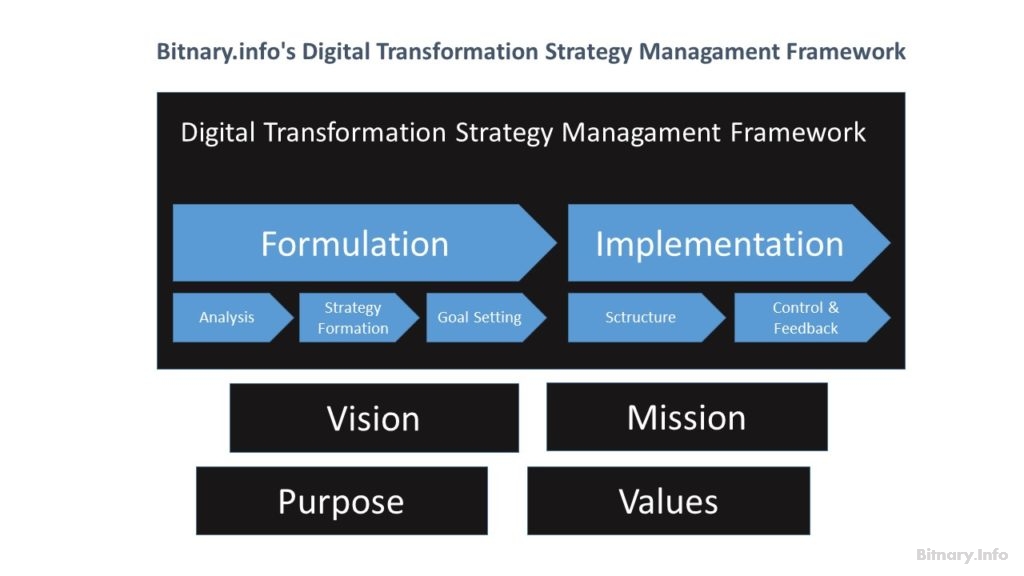Digital Transformation Strategy Definition and Management Framework
A Digital Transformation Strategy definition and management involves the related concepts of strategic planning, strategic thinking, Digital Transformation and Strategy.
Digital Transformation Strategy definition and management is often described as involving two major processes: formulation and implementation of strategy. While described sequentially below, in practice the two processes are iterative and each provides input for the other.

Bitnary.info’s Digital Transformation Strategy Managament Framework
Formulation
Formulation of Digital Transformation Strategy involves analyzing the environment in which the organization operates, then making a series of strategic decisions about how the organization will compete using the digital advantage. Formulation ends with a series of goals or objectives and measures for the organization to pursue. Environmental analysis includes the:
- External Environment, including the political, economic, social, technological, legal and environmental landscape;
- Industry Digital Environment, how the technology are disrupting: the competitive behavior of rival organizations, the bargaining power of buyers/customers and suppliers, threats from new entrants to the industry, and the ability of buyers to substitute products; and
- Internal Environment, regarding the strengths and weaknesses of the organization’s resources (i.e., its people, processes and IT systems).
Strategic Digital Transformation decisions are based on insight from the environmental assessment about how the new technologies could disrupt the company business, and should be informed responses / decisions through data to strategic questions about how the organization will compete, such as:
- What is the organization’s business?
- Who is the target customer for the organization’s products and services?
- Where are the customers and how do they buy? What is considered “value” to the customer?
- Which businesses, products and services should be included or excluded from the portfolio of offerings?
- What is the geographic scope of the business?
- What differentiates the company from its competitors in the eyes of customers and other stakeholders?
- Which skills and capabilities should be developed within the firm?
- What are the important opportunities and risks for the organization?
- How can the firm grow, through both its base business and new business?
- How can the firm generate more value for investors?
Implementation
The second major process of Digital Transformation Strategy management is implementation, which involves decisions regarding how the organization’s resources (i.e., people, process and IT systems) will be aligned and mobilized towards the objectives. Implementation results in how the organization’s resources are structured (such as by product or service or geography), leadership arrangements, communication, incentives, and monitoring mechanisms to track progress towards objectives, among others.
Running the day-to-day operations of the business is referred to as “operations management”, which take over once strategic management decisions are implemented.

